Guitar World Verdict
It does what the Eclipse has always done: offers an alternative to vintage-inspired guitars of this type. In this guise, it’s had its metaphorical edges mellowed slightly, but what remains is still a fire-breathing tool of hard rocking.
Pros
- +
Sits nicely between vintage and modern styling.
- +
Exciting third‑party features.
- +
Stunning visuals, even better sounds.
Cons
- -
Pickup choice is limited to Tobacco Burst finish if you want to stick with the (rather heavy) Full Thickness body.
- -
Control layout/pickup voicing is confusing at first.
You can trust Guitar World
Picture a modern take on the single-cut and there’s every chance that what springs to mind is ESP’s Eclipse – a refined example of the classic format where the fat has been trimmed and slick, glossy precision replaces dust and mojo.
The ESP Eclipse is the single-cut for people who are less interested in tradition and, as with much of the brand’s identity, has attracted a number of players who spend their time on the ‘red channel’; James Hetfield, Alex Skolnik, Lamb Of God’s Willie Adler and Mastodon’s Bill Kelliher are all examples of players who have chosen a blackout over a ’Burst. Except the Eclipse is no longer the new kid on the block, as evidenced by our review guitar, the ESP E-II Eclipse Full Thickness.
As part of the E-II line-up, which replaced the ESP Standard range back in 2014, it sits between the company’s more affordable LTD guitars and more expensive USA models, but a quick look at the price tag should be confirmation enough that this is by no means a ‘second-tier’ model.
Just like the ESP Standards, the E-II series is built in Japan, and our Eclipse is host to a number of premium features throughout. From the headstock down we get black Gotoh Magnum Lock-equipped tuners, a bone nut, Dunlop strap locks, and a black Gotoh tune-o-matic-style bridge and tailpiece.
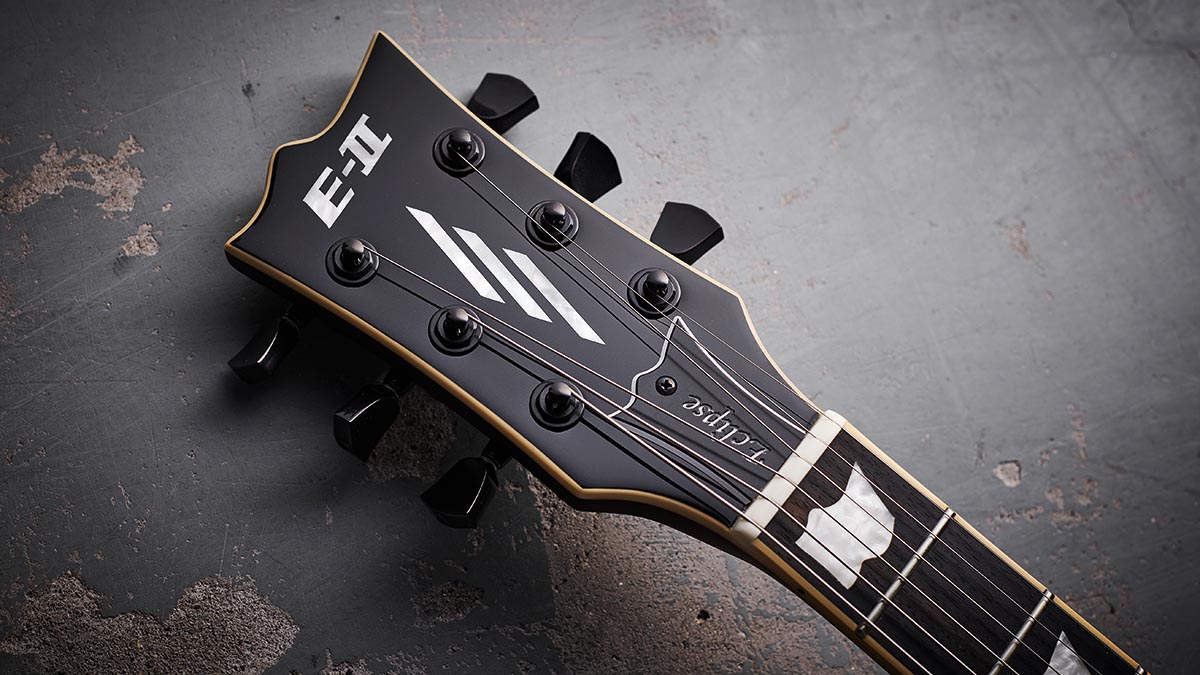
But you might be wondering about that ‘Full Thickness’ in the model name. This refers to the body depth, which is thicker than that regular Eclipse and built from mahogany, a maple cap and a flamed maple veneer to give a combined ‘Full Thickness’ of 60mm, as found on vintage single-cut guitars, as opposed to the standard overall thickness of 50mm.
“Wait, what? Tradition?!” Yep, it’s a heavyweight both in terms of its form and actual mass. Of course, this isn’t a new concept for ESP as the Full Thickness body has been around for a number of years.
What is new is the finish and pickup configuration in which ESP has made this guitar available. Our Tobacco Sunburst model comes fitted with active Fishman Fluence Open Core Classics and was released earlier this year alongside the also-new Vintage Honey Burst version (Seymour Duncan JB/59) and the existing Black Natural Burst (EMG 66/57).
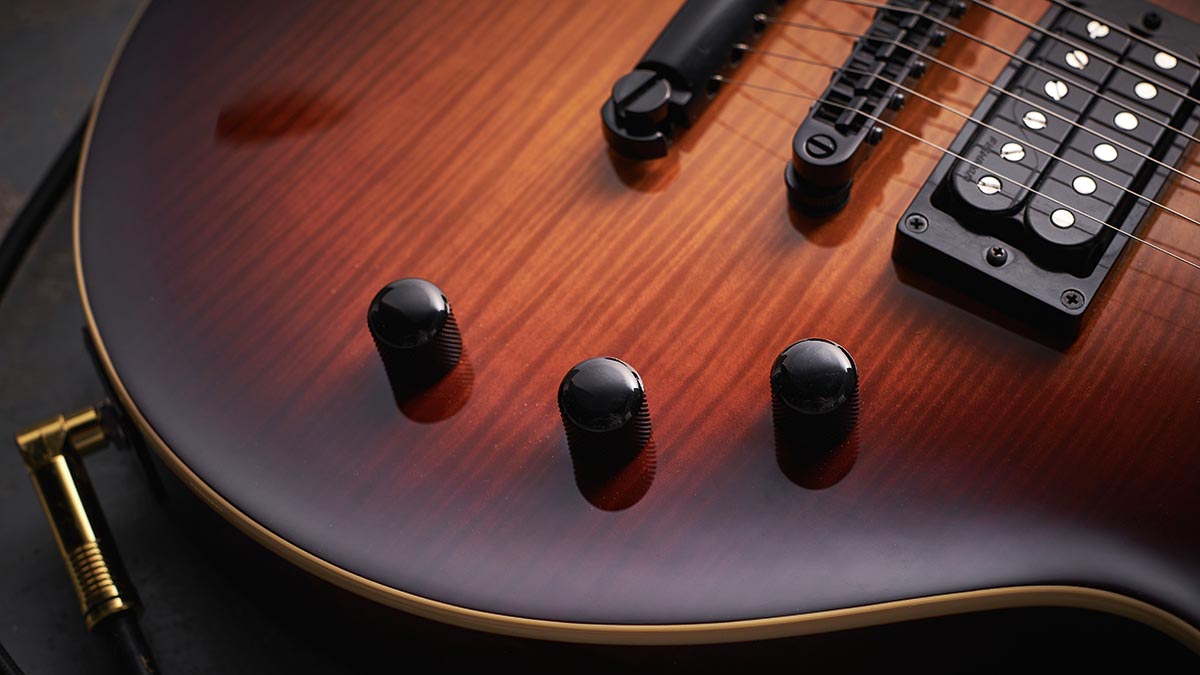
Feel & Sounds
Despite the name of the finish, opening the included hardcase reveals an altogether more red-ish, Coke-in-the-sun tint across the body. It looks great and combined with the black hardware hints towards a ’70s Les Paul Custom sort-of vibe.
The body, fingerboard and front face of the headstock are clad with a single-ply cream binding, while the flamed top is beautifully even and nicely matched, and with the gloss paint job on top ‘rich’ sums things up nicely.
The neat finishing continues across the rest of the guitar, with the set-through mahogany neck covered in an equally immaculate and even dark cherry satin finish. Obviously, neck finishes are a personal preference, but this ranks among one of the finest we’ve played of late – silky smooth without the glossy feel. Then there’s the ebony fingerboard.
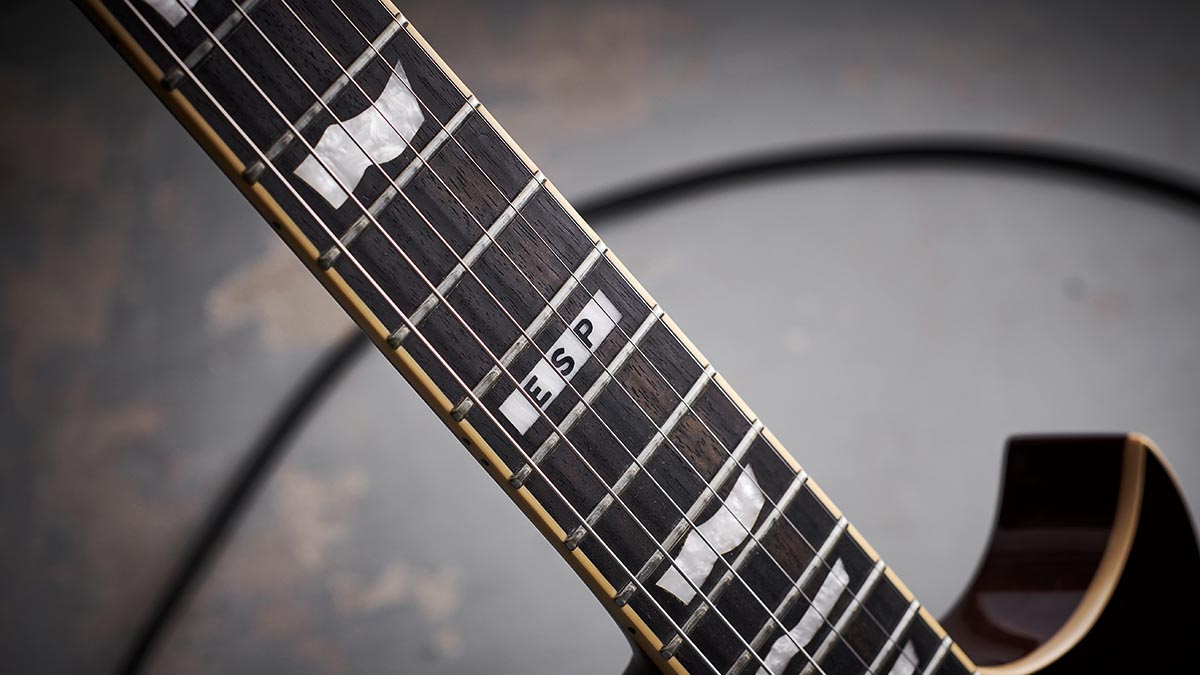
As we’d expect from this type of guitar, it’s a 628mm (24.75-inch) scale with 22 frets. In this case they’re highly polished and extra jumbo sized. It’s almost a shame that so much of the fretboard is populated with ESP’s ‘flag’ inlays because the dark, consistent nature of the wood is so good. But it is, as they say, what it is.
Picking it up you’ll notice the weight. It’s well balanced, but at just under 4kg it may not be ideal for two-hour marathons. The upshot of all that mass is that it seems to contribute to the lively natural resonance. Your ears will thank you – even if your spine won’t be quite so happy.
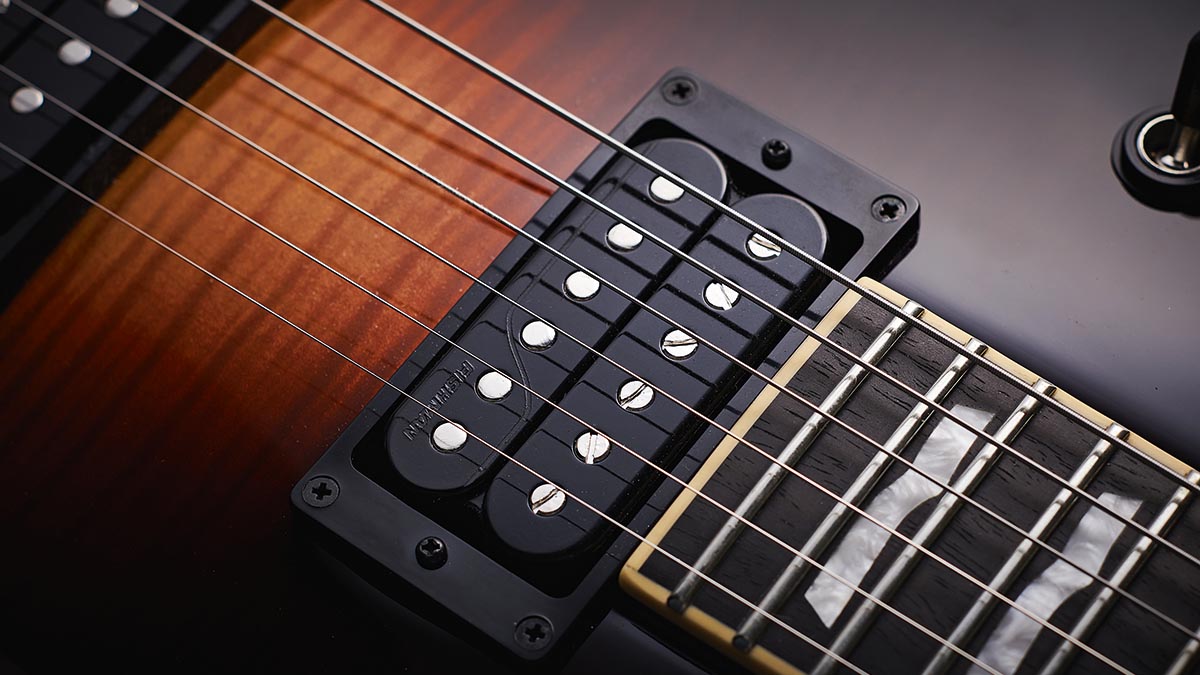
It feels great to play, though, with that neck delivering comfort and speed from the ‘Thin U’ profile (that’s not actually that thin), offering a decent palmful that’s more palm-filler than modern shredder.
Likewise, the extra jumbo frets are less noticeable in practice than on paper. Their highly polished finish makes string bends feel like you’re skating, and they’re nicely rounded, avoiding the speed bump effect you can sometimes get with frets of this size.
We took it down to drop C comfortably with the factory fitted Elixir Nanowebs and the tuning remained stable
Despite the traditional scale length and 0.010 to 0.046-gauge strings that the guitar ships with, there’s a tension to this Eclipse (whether implied or real) that we found reacted nicely, even if you’re heavy on the picking hand.
Open strings stay in their lane, pitch-wise, and it also appears to help with lower tunings, too. We took it down to drop C comfortably with the factory fitted Elixir Nanowebs and the tuning remained stable.
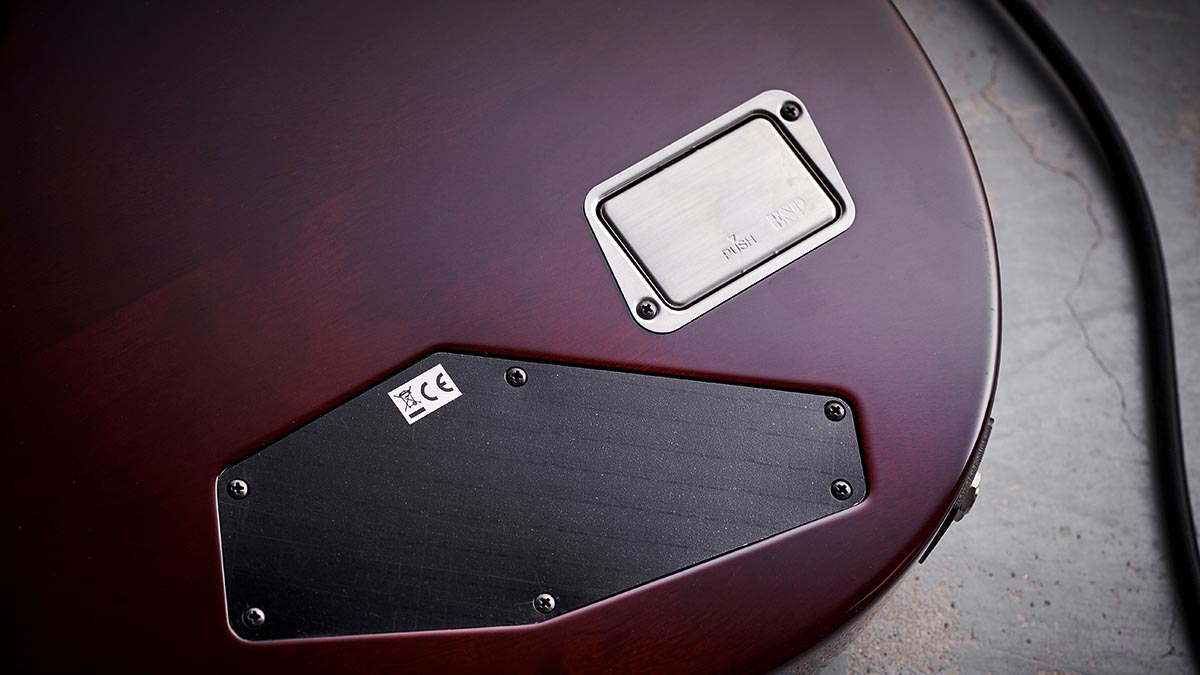
So, what of those pickups, then? Well, first we should note that the volume controls are mounted in reverse order to what you might expect, a nod to the fact that ESP is expecting you to stay parked in the bridge position for a lot of the time.
Each pickup gives you three voices, selectable via the push-pull neck volume and master tone controls. Voice 1 is based on a vintage PAF, Voice 2 for the neck position is described by Fishman as “clear, airy chime”, while the bridge humbucker turns into a Classic Hot Rod, and Voice 3 on both provides a coil-split, aiming for clarity in the neck and a hotter, overwound single coil in the bridge.
Confusingly, ESP appears to have taken a similar approach with the voice selection as it has done with the control layout, opting to give you the full-bore bridge and extra punchy neck tones of both second voices as your starting point. Pulling on the tone control reverts the pickups to what Fishman calls Voice 1, and the neck volume engages the single-coil modes on both.
What you have here are three brilliant voicings, all of which are geared towards the rockier end of things
Regardless of what you call them, what you have here are three brilliant voicings, all of which are geared towards the rockier end of things. In the default (knobs pushed down) position, you get a more scooped neck tone, removing some of the wool, and the bridge is roaring with more output, increased attack, with an additional bite to both pickups.
That’s not to say the PAF voices are lacking, but after playing on the brighter, more aggressive default settings for a while, they lose some of their immediacy. That said, this voicing will definitely have its place for the bluesier/more traditional end of the rock spectrum.
We have to remove our trilby for the coil-split of Voice 3, though. It’s an excellent representation of a raunchy single-coil sound in both positions with the neck revealing a deep, woody tone that sounds brilliant under a bit of gain (think Tom Morello), and the bridge position split giving us some great midrange-y, quacky vintage funk sounds.

Verdict
We hate to break it to you, but The Black Album is 30 years old, your baggy trousers from 25 years ago are now back in fashion, and yes, the Karate Kid really did just celebrate his 60th birthday. The point is, maturing is okay and the Eclipse Full Thickness is the proof.
It does what the Eclipse has always done: offers an alternative to vintage-inspired guitars of this type. In this guise, it’s had its metaphorical edges mellowed slightly, but what remains is still a fire-breathing tool of hard rocking.
The styling and, in particular, the additional voices from the Fluence Classics just make it even more versatile. If the rivals are a road too-well travelled for you, but you don’t want a guitar that is a gateway to middle-aged facial piercings, either, we think it sits just right.
Specs
- PRICE: $/£2,499 (inc case)
- ORIGIN: Japan
- TYPE: Single-cutaway solidbody electric
- BODY: Mahogany with maple cap/flamed maple veneer
- NECK: Mahogany, set-through
- SCALE LENGTH: 628mm (24.75”)
- NUT/WIDTH: Bone/42mm
- FINGERBOARD: Ebony with Flag inlays, 305mm (12”) radius
- FRETS: 22, extra jumbo
- HARDWARE: Gotoh tune-o-matic-style bridge and tailpiece, Gotoh Magnum Lock locking tuners, Dunlop strap locks – black-plated
- STRING SPACING, BRIDGE: 50mm
- ELECTRICS: 2x Fishman Fluence Classic Open Core, bridge volume, neck volume, master tone – pull-push pots access the extra sounds
- WEIGHT (kg/lb): 3.84/8.45
- OPTIONS: None
- RANGE OPTIONS: Vintage Honeyburst version w/ Seymour Duncan 59/JB and Black Natural Burst w/ EMG 66TW/57TW
- LEFT-HANDERS: No
- FINISHES: Tobacco Sunburst (as reviewed) – high gloss with satin neck back
- CONTACT: ESP Guitars

Stuart has been working for guitar publications since 2008, beginning his career as Reviews Editor for Total Guitar before becoming Editor for six years. During this time, he and the team brought the magazine into the modern age with digital editions, a Youtube channel and the Apple chart-bothering Total Guitar Podcast. Stuart has also served as a freelance writer for Guitar World, Guitarist and MusicRadar reviewing hundreds of products spanning everything from acoustic guitars to valve amps, modelers and plugins. When not spouting his opinions on the best new gear, Stuart has been reminded on many occasions that the 'never meet your heroes' rule is entirely wrong, clocking-up interviews with the likes of Eddie Van Halen, Foo Fighters, Green Day and many, many more. If he's not playing the guitar, you'll likely find Stuart behind the kit playing Valerie to newlyweds.
“It holds its own purely as a playable guitar. It’s really cool for the traveling musician – you can bring it on a flight and it fits beneath the seat”: Why Steve Stevens put his name to a foldable guitar
“Finely tuned instruments with effortless playability and one of the best vibratos there is”: PRS Standard 24 Satin and S2 Standard 24 Satin review











